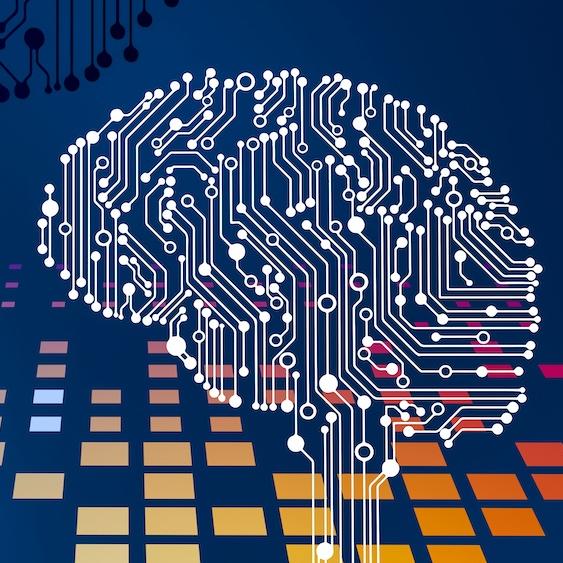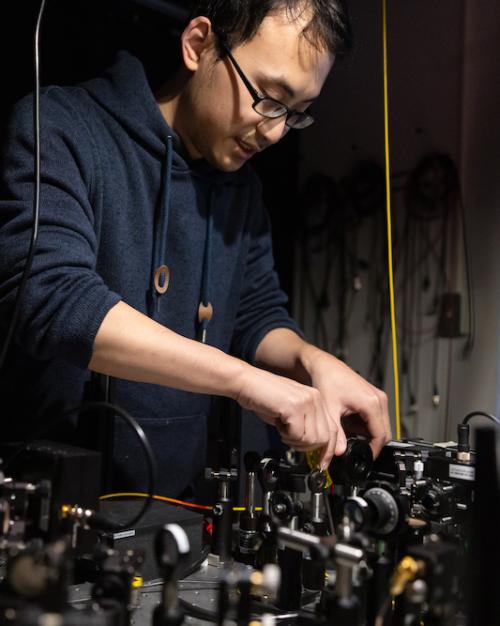Electron interactions are mysterious, delicate, basic to our understanding of matter – and exponentially complex, says physicist Hongyuan Li.
“Each electron has a charge. They also carry a quantum property called ‘spin.’ These charges and spins can interact with each other, making electron behavior very complicated,” said Li, a Klarman Postdoctoral Fellow in physics in the College of Arts and Sciences (A&S) and an experimental fellow at the Kavli Institute at Cornell (KIC) for Nanoscale Science.
One cubic centimeter of steel can contain as many as 1023 electrons, each interacting with others, Li said; one cup of water contains even more. The electrons’ collective behavior, although very challenging to predict due to these various interactions, are nonetheless important to emergent phenomena, such as high-temperature superconducting, making the study of “corelated electrons,” as the field is known, a central focus of modern condensed matter physics.
At Cornell, Li is developing experimental tools to explore the nature of electron interactions in collaboration with the lab of his faculty co-hosts Kin Fai Mak, professor of physics (A&S) and Jie Shan, professor of physics (A&S) and Walter S. Carpenter Jr. Professor of Engineering in Cornell Engineering. With the tools, Li detects interacting electrons in specialized two-dimensional (2D) materials made of a few – or only a single – layer of atoms.
The thinness of 2D materials allows experimenters to tune their properties in many ways, such as how dense the electrons are or how strong their interactions, Li said.
“You can also tune how they interact with the external environment. You can tune the electrical field, apply a magnetic field or shine lasers.”
Li’s new tool involves an ultrafast laser that can hit 2D materials in pulses lasting a picosecond (one trillionth of a second) or an even faster femtosecond (one quadrillionth of a second). These ultrafast pulses allow him and colleagues to study electron thermodynamic properties, which have previously been studied using techniques that are much slower, Li said.
Speed is a benefit while studying thermodynamic properties of electrons in 2D materials, Li said.
With the ultrafast lasers, “I can monitor how physical properties such as magnetization and electric polarization evolve as a function of time, one topic I’m working on now,” Li said.
Another of Li’s current experiments is related to the detection of the quantum spin liquid state – a unique and elusive phase of matter that can be formed by interacting quantum spins in certain magnetic materials, a topic of wide interest among condensed matter physicists.
“Quantum spin liquid is hard to probe, it’s mysterious,” Li said. “So we decided to simulate it in another system where we are looking for the phenomenon, which we are calling ‘pseudo spin liquids.’”
Following up on theoretical research by others, Li and colleagues are trying to create and probe quantum spin liquid-like scenarios in two layers of 2D materials, in which they have control over many aspects of the set-up. Lasers are used in this experiment, but not the ultrafast ones.
“We hope to observe more direct evidence of the spin liquid states, thanks to more electrical accessibility of such a pseudo spin liquid system,” Li said.
Cornell is a great place to be doing experiments in condensed matter physics, Li said, because of the university’s wide resources in facilities and expertise. His faculty hosts, Shan and Mak, are renowned for their expertise in optical spectroscopy and 2D quantum materials. The Klarman Fellowship provides abundant resources and freedom to set his own research agenda, Li said. And as a Kavli Institute fellow, he has many opportunities to work with researchers on a wide variety of topics – particularly important when studying interacting electrons.
“In the general field of condensed matter physics,” Li said, “collaboration is very important.”






